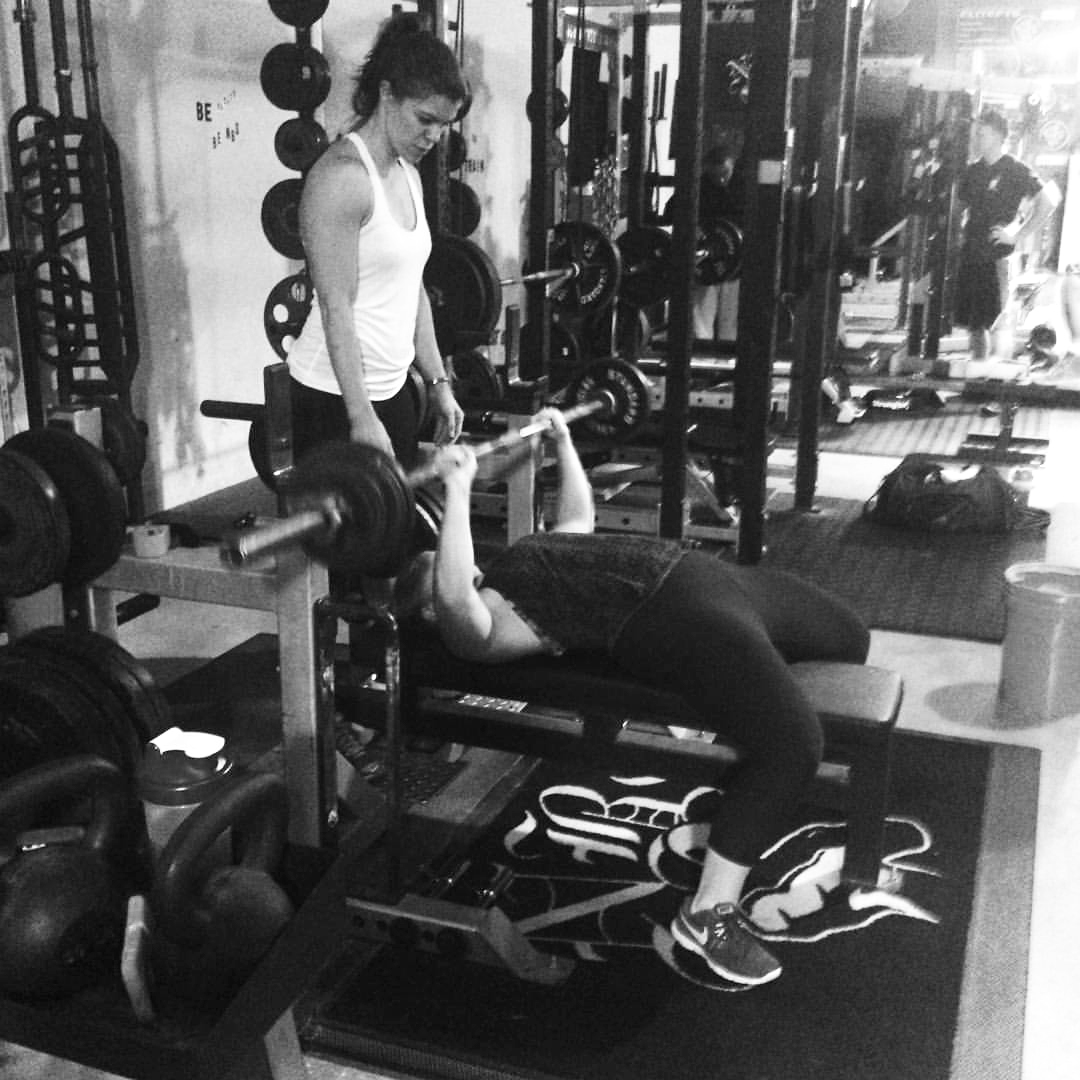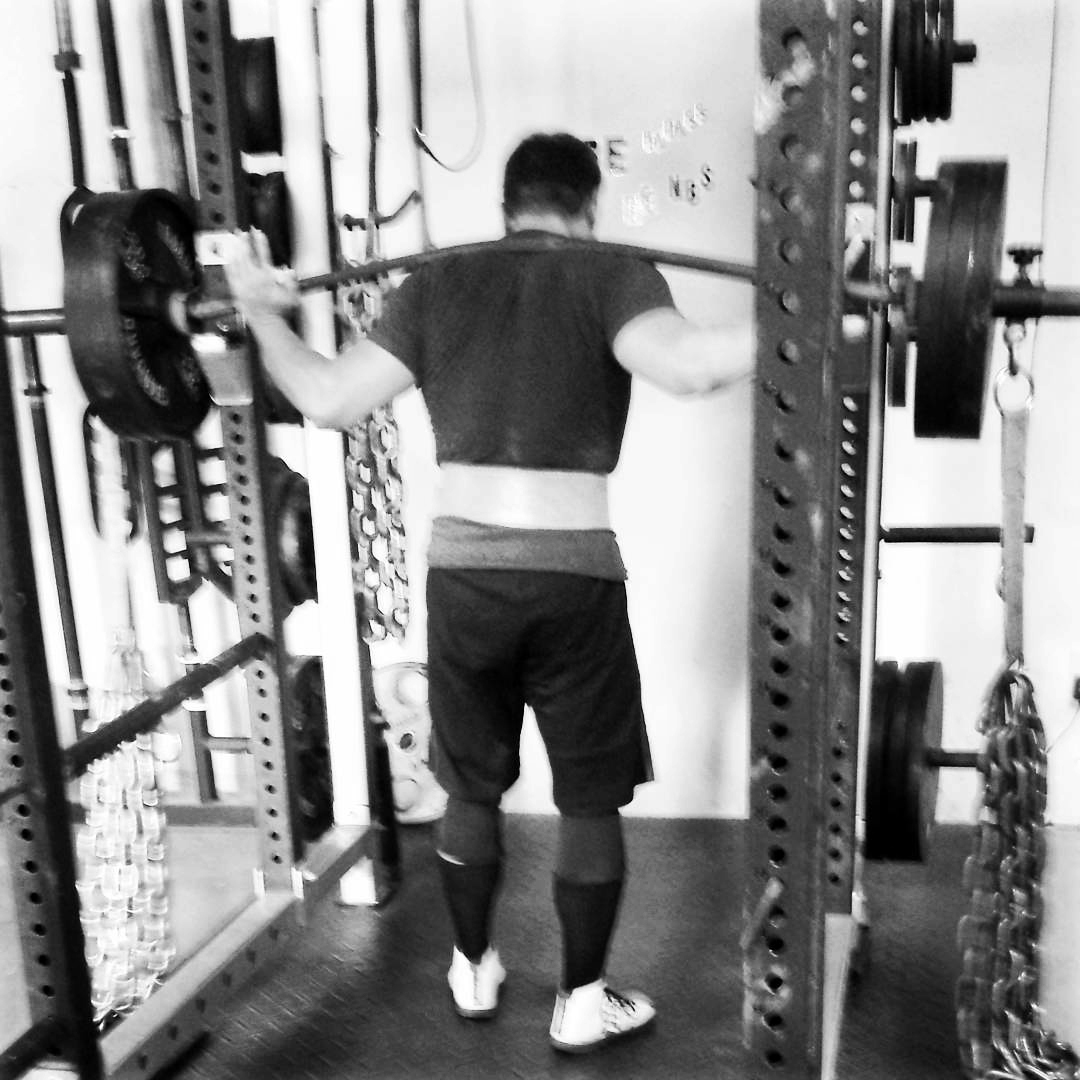
The period of time for the greatest increases in strength performance occurs when people first begin their journey of strength training. During these first several months, a lifter can enjoy the experience of seeing his lifts increase day by day, week by week and month by month. As his body adapts to the new stimuli placed upon it, he can see exponential improvements. Over time, the rate at which improvements occur tends to slow down and more advanced training methods are required to further the strength gains.
The journey of any iron sport athlete will be full of periods of growth and stagnation. At times, lifts will seem to increase no matter what the athlete does, and at other times, the athlete will struggle to see even the smallest improvements. This article will show a few simple strength progressions you can use to ensure continual progress for as long as possible.
One of the biggest mistakes beginners make is using techniques that are too advanced for them too early. A second common mistake made by intermediates is relying on the same training methods that they used as beginners. Also, there is no hard definition for each level of lifter. In my mind, a true beginner is someone with zero to very little weight training experience or sports experience. This could be a youth or a grown up or even a grown up with some experience but who hasn’t trained or exercised in an extended period of time. In these cases, I would likely start with a program similar to the ones I have outlined here.
MORE: Programming Progressions for Beginning Personal Training Clients
However, after a period of time, in order to build some base levels of health and fitness and motor control, the person would be ready to progress up to a beginner strength program. When it comes to beginner strength programs, there are a few things to take into consideration:
- Use the minimum effective dose
- Keep the exercise selection small
- Train with submaximal weights to allow for better technique improvement
For beginners, I prefer to use a variation of the 5 X 5 method, similar to that written about in Starting Strength.
Typically, it will look like this:
Workout A
- Box squat, work up to a heavy set of 5
- Bench press, work up to a heavy set of 5
- Back work
- Posterior chain work
- Core work
Workout B
- Deadlift, work up to a heavy set of 5
- Push press, work up to a heavy set of 5
- Back work
- Posterior chain work
- Core work
The beginner will do three workouts a week, alternating between workout A and workout B, which allows him to train the same movements four times every two weeks. The first two main movements on each day are taken up to a heavy set of five (not a max set of five). This allows the beginner to train moderately heavy while still perfecting technique. In each workout, the lifter will try to go up 5–10 pounds from the previous last set. If a lifter gets to a weight and can't do it for five reps, he will continue to work up to that weight on his last set each week until he can get all five reps.
The other exercises are done to build up areas that are necessary for moving big weights in the main movements and are done at a higher volume, usually three to four sets of 10–15. There is no need to change out exercises for an extended period of time. From my experience, beginners can make improvements on the main lifts in anywhere from six to 20 weeks. They may not go up 5–10 pounds every week, but usually after two or three workouts of the same weight, they will get all five reps and be able to go up the next week. The accessory lifts can be switched out more often, as progress on them usually slows sooner than on the main lifts.
Once a lifter begins to fail on multiple lifts over multiple workouts or begins to go backward in weight on more than one lift or on more than one workout, I know we've gotten the most out of that program. Like I said earlier, progress can usually continue all the way up to around five months. After completing that program, I've found that most people can reach a two times their body weight squat, a one times their body weight bench press and a two times their body weight deadlift using a predicted one-rep max. With those numbers, I would consider someone to not be a beginner anymore.
When it comes to intermediate strength programs, there are a few things to consider:
- Only make one change at a time. Again, minimum effective dose and minimum effective change.
- Technique should be ingrained better so that working more maximally is good.
- The overall fitness is higher and therefore the ability to recover should be improved as well so greater volume can be used.
Going along with the minimum effective change, there are two potential initial changes that I would make from the program above:
Option A
Workout A
- Box squat, work up to a heavy set of 3
- Bench press, work up to a heavy set of 3
- Back work
- Posterior chain work
- Core work
Workout B
- Deadlift, work up to a heavy set of 3
- Push press, work up to a heavy set of 3
- Back work
- Posterior chain work
- Core work
It's the same exact setup as before, except now the lifter works up to heavy sets of three instead of five. Everything else is done exactly as it was before.
Option B
Workout A
- Squat heavy, 3 x 5
- Accessory work
Workout B
- Bench heavy, 3 x 5
- Accessory work
Workout C
- Deadlift heavy, 3 x 5
- Accessory work
Workout D
- Push press, 3 X 5
- Accessory work
This would follow similar guidelines as our initial program, except it will be a four-day week training program instead of a three-day week program. The main lifts are done working up to a heavy set of five reps with an additional two sets of the same weight afterward. Accessory work is still done at a higher volume. Now more work can be done and the work can be more specific to the main lift.
Once progress has stalled, there a couple different options:
- Option 1: Main lifts now go to a heavy 3 X 3. Once progress stalls, go to a heavy 3 X 2, 2 X 2, 3 X 1, 2 X 1 and so on.
- Option 2: Jim Wendler’s 5/3/1 program can be implemented where the volume on main lifts rotates between heavy 5s, 3s and 1s.
- Option 3: Movements can be changed (i.e. squat becomes yoke bar squat, bench becomes floor press, conventional deadlift becomes sumo deadlift, push press become military press), and the set and rep scheme can follow the same progressions of heavy 5s and then to heavy triples and so on.
Once these types of options have been maximized and progress has again stalled, a more advanced training methodology can be implemented. Until then, learn to be smart, have fun, train safe and enjoy watching your lifts go up week to week.













It will look like this
Week 1
Day 1: Workout A
Day 2: Workout B
Day 3: Workout A
Week 2
Day 1: Workout B
Day 2: Workout A
Day 3: Workout B
Week 3
Day 1: Workout A
Day 2: Workout B
Day 3: Workout A
Week 4
Day 1: Workout B
Day 2: Workout A
Day 3: Workout B
The height of the box depends on your hip mobility. I wouldn't go any more than an inch below parallel but if you have to go higher in order to maintain proper lumbar spine position, that is okay as well. You can start above parallel with several mats and remove a matt each session/set as your ability to go through the greater range of motion with correct form improves.
1) Thoughts on back-off sets for the big 3 (possibly even OHP)
2) Thoughts on making this a 4 day split (possibly every other day)
For back off sets, I would hold off until you've made good progress on the current program. More doesn't alway equal better. The best thing about this program is you can make progress for a long time in a linear fashion before you have to change stuff up. If you start taxing your body's ability to recover too soon you miss out on that type of progress.
That being said, you could add in back off sets after several cycles. I like back off sets for technique work personally. After the heavy set, you will see where your form breaks down and you can use a few back off sets to really hammer the technique back down.
At the very end of the article I give an example of a 4 day split. Is that what you were asking about?
How heavy should those 3x5 sets be? Should they be a true 5RM with long rests in between sets? Or should I "leave one in the tank". I've never trained each big lift just once per week but my hunch is that the intensity should be very high.
You won't likely be able to do 3 sets at a true 5RM. More so, work up to a difficult set of 5 where you have one more in the tank and then add weight week to week from there.
My idea was to do pretty much that exact 4 day intermediate routine but different rep scheme. I'm gonna jump into it ASAP.
One quick question, I drive for a living andmy lower back frequently feels tight and hampers my squat work. I drive a bus for a living. Sometimes I warm up what I feel is too long! What do you recommend
Take as much time as you need to warm up. Better to take the time you need than to rush it and suffer an injury during training. Find what warm up exercises help you the most and stick with those. You can even continue into your work with doing warm up exercise between warm up sets. That can help speed it up as well. Here are some warm up routines and exercises that we use https://www.youtube.com/playlist?list=PLJgXvECb-OaDYAukTzbkU244vcTSML5mx.
Hope that helps.
Both. You need to do a combination of knee flexion and hip extension movements. GHRs, 45 degree hypers, RDL variations, goodmorning variations, leg curl variations, revers hypers, etc. I wouldn't do power cleans at that point in the program because you will already be fatigued from the main movements earlier in the workout.
What do you think about replacing deadlifts with rack pull ?
thanks